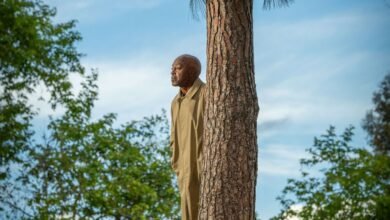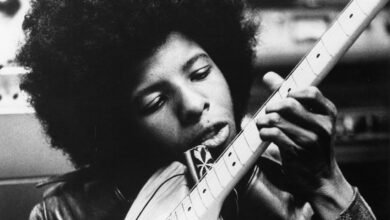
My grandmother first told me some version of this story when I was too young to have any conception of what the poem was about. I recall being impressed that someone I was related to had written something that was admired by Grover Cleveland, whose name sounded familiar.
According to Lewis L. Gould, who wrote a biography of Terrell, the poem was actually written by Alfred W. Arrington, who served as a district judge in Texas in the eighteen-fifties. At any rate, Terrell was my step-great-great-grandfather.
My other grandmother—my father’s mother—often told me that I was related to Daniel Boone, and all through grade school I held my head a little higher. Recently, with help from ancestry.com, my son was able to determine the exact relationship: we are Daniel Boone’s first cousins, eight times removed in his case, seven times in mine. I was interested, of course, but I also wondered what one gains by tracing one’s so-called lineage, since if you go back far enough almost everyone turns out to be related to almost everyone else. I was reminded of a koan-like question that my daughter asked, shortly before she turned five, about a different olden-days guy (to whom we are not related, as far as I know): “Why was Davy Crockett real?”
Nevertheless, there are fascinations. My grandmother spent her adult life in Kansas City, but often returned to Austin. During one trip, in the nineteen-thirties, she took my mother to see a parade and realized she had parked in front of the house of a former suitor. My mother was five or six, and her hair (she recalled later) was done up in curlers, bobby pins, or strips of cloth, because my grandmother was trying to give her ringlets, like Shirley Temple’s. My grandmother told my mother to slump down in her seat, because she didn’t want an old beau to see her looking like that. “The man who lives in that house might have been your father,” she said.
Temple’s movies in that period included “The Little Colonel,” which was based on a book of the same name, by Annie Fellows Johnston. The book is about a feisty little girl who brings about a rapprochement between her grandfather, who had been a Confederate colonel during the Civil War, and her mother, whom he disowned when she married a Yankee. The book and its sequels were my grandmother’s favorites. When she was in her nineties and confined to a bed in a nursing home, she read and reread large-print copies, which my mother had taped back together many times, until their pages were almost laminated. The movie’s best-known scene—in which the title character, played by Temple, tap-dances on a staircase with one of her grandfather’s Black servants, played by Bill (Bojangles) Robinson—isn’t in the book. Temple said in her autobiography that it wasn’t in prints of the movie that were shown in the South, either, because Temple and Robinson, during part of the scene, hold hands. The book’s casual racism is appalling; so is its head-spinning superabundance of apostrophes: “Fritz, would you rathah have some ’trawberries an’ be tied up fo’ runnin’ away, or not be tied up and not have any of those nice tas’en ’trawberries?” (Fritz is the Little Colonel’s dog.) It’s a book that no one would read to a child today, I hope.
Will Dusenbury and my mother in the garden of his Portville, New York, home.
I know from a family history compiled by my mother that my grandmother married my grandfather, Carl Dusenbury Matz, on October 5, 1918. Carl was an Army captain. At the time of the wedding, he was stationed in Austin, at the School of Military Aeronautics at the University of Texas, but he wasn’t a Texan. He was born in Hoosick Falls, New York, in 1887, and he had degrees from Williams College and Harvard Law School. He was thirty-one, and my grandmother was twenty-four. During the ceremony, he had a severe case of the flu—and it was probably the Spanish flu, which was spreading in Texas at that time, especially in places like military bases and college campuses. He was lucky, though, and didn’t die. (It’s always interesting to contemplate the innumerable accidents by which one nearly failed to come into being.)
If I could choose one end of my family’s gene pool to swim in, I’d choose Carl’s. His grandfather Otto H. Matz grew up in Berlin, and his family owned a company that made silk clothing and furnishings. In 1848, when he was eighteen, Otto joined a large crowd in front of the Royal Palace, which was across the canal from his father’s factory, on Unterwasserstraße. This was the beginning of what became known as the March Revolution. Friedrich Wilhelm IV spoke from a balcony, and announced a number of reforms. The crowd became disorderly, officers fired two musket shots, and mounted soldiers beat back panicking spectators with the flats of their sabre blades. “With some difficulty crawling out from under and between the legs of the horses, I got disentangled,” Otto wrote, almost fifty years later, in an unpublished memoir. He moved with the mob into the adjoining streets. The rioters overturned wagons, armed themselves with pickaxes and crowbars, and pried up paving stones. For two days, he was unable to return home. “The rattling musketry and booming of cannons became terrific,” he wrote. Fires burned throughout the city. He suggests in his memoir that he was a spectator only—“The military always had a great attraction for me, so I managed to be close up to it”—but he helped to carry the dead and wounded into nearby churches, and to place them in rows around the altars, and he returned later to watch a long funeral procession, for around two hundred of the dead, “each coffin being carried by six working men.”
Otto’s oldest brother had been among the soldiers sent to contain the rioters; when the fighting ended, his regiment was “ordered north to assist in the struggle between Denmark and the Schleswig-Holstein”—one of the many conflicts taking place in Europe at that time. Soon afterward, their father found his name on a published list of casualties. The family was devastated, but the listing turned out to be a mistake.
The next year, Otto’s sister Marie, who was five years older, ran off with a young man her parents didn’t approve of. “Mother was crazed with grief and heartbroken,” Otto wrote. “It was finally ascertained that they had left by way of Bremen for America, but not on what vessel or for what port.” He volunteered to find her, perhaps partly to avoid being called up by the Army. “But now the question arose, whether I shall go to North or South America?” He decided to “cut the Gordian knot” by taking the first ship that cleared, and ended up on the Franklin, a wooden sailing ship bound for New York. There were five dozen other passengers, all but two in steerage, and the crossing, in miserable weather, took almost two months. Some of the passengers stayed below the entire trip, but Otto spent most of his time on deck. “I often went into the rigging with the sailors and made myself generally useful,” he wrote. The captain liked him, and had a bunk for him moved into his own cabin, which was the size of a large closet. During one particularly fierce storm, a chicken coop that Otto was clinging to on deck broke free. He would have been swept overboard, he wrote, if the first mate hadn’t grabbed his leg as he slid past. The chickens went into the ocean.
Otto eventually did meet up with his sister and her lover, who had landed in New Orleans, married, and settled on a farm near St. Louis. They were incompetent farmers, but they didn’t return to Berlin. Otto didn’t, either. Before leaving for America, he had decided to pursue “the building arts” as a career, and when he arrived in New York he lived at first in a German boarding house and divided his time between learning English and wandering through the city sketching buildings, which were different from the ones he had studied at home. After reuniting with his sister, he found work as a draftsman in Galena, Illinois, two hundred and sixty miles north of St. Louis, and eventually got a job as an architect for a railroad company. In 1861, shortly after the Confederate artillery fired on Fort Sumter, he enlisted in the United States Army, and served mainly as a surveyor and mapmaker. He conferred with many of the Union generals you read about in books. “In their retreats, they generally insisted that their lines were marked too close to the Tennessee Landing,” he wrote, referring to Shiloh, “and in their advances not close enough to the retreating column of the enemy.” During the Siege of Vicksburg, he met General Grant’s oldest child, Frederick, who was accompanying his father. Frederick turned thirteen shortly after he arrived. “He had been presented with a handsome Indian pony and to our great amusement we saw the General mount the pony and race along the ridge between the two rows of tents, his legs almost touching the ground.”
Source link







